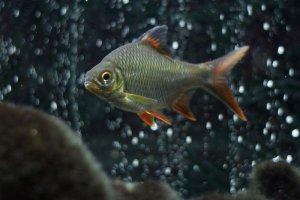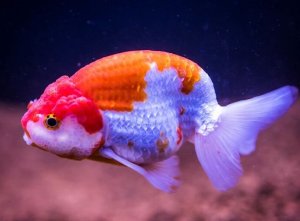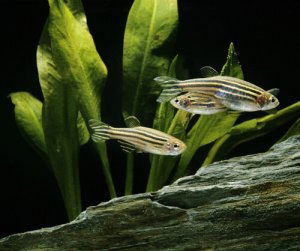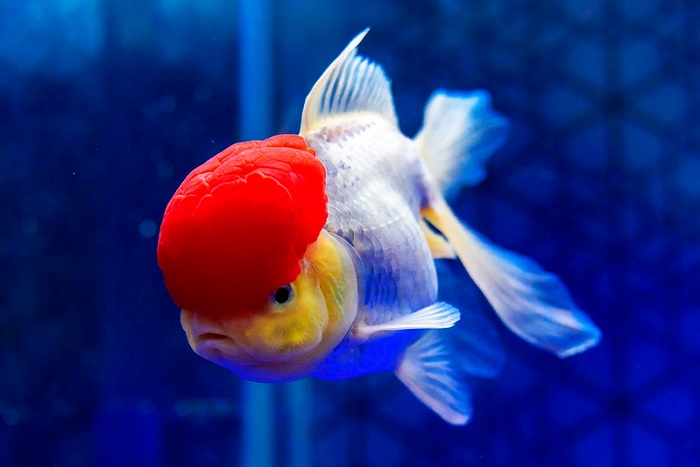
Breed Overview
| Origin | Asia |
| Lifespan | 10-20+ years |
| Size | 6-7 inches, but can get larger depending on genetics |
| Colour | Blue, calico, black, red, and white, red and many different patterns |
| Food | Omnivore |
| Tank Size | 20-30 gal for 1 fish, adding 10 gallons with each new fish |
| Temperament | Easy going |
| Water Type | Freshwater |
| Water Temperature | 65° to 72° Fahrenheit |
| Water pH | 6.0-8.0 |
Species Summary
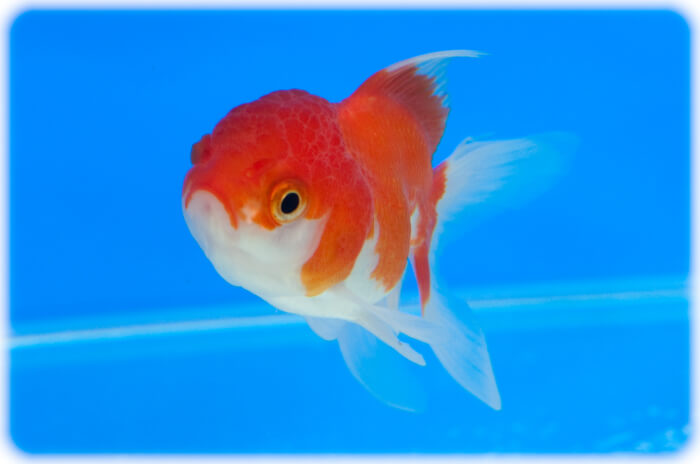
Oranda Goldfish are chubby, bobble-headed fish that often catch the eye of new and experienced aquaculturists. They have squishy, large growths on their head, short squatty bodies, and the cutest of faces. All Goldfish originate from a wild carp, Carassius auratus gibelio, which is a Central Asian species and was used mostly as a food source. In the 1500’s Chinese breeders began breeding and trading their brightly colored cousins, the Goldfish. The Fancy Oranda Goldfish is one of the oldest variants of those original Goldfish. In those ancient days, they were kept in large glass vases before fish tanks were invented!
If you have decided that the Oranda Goldfish is one you would like to take home for your fish tank, follow along with us to find out everything you need to know!
What Do Oranda Goldfish Look Like?
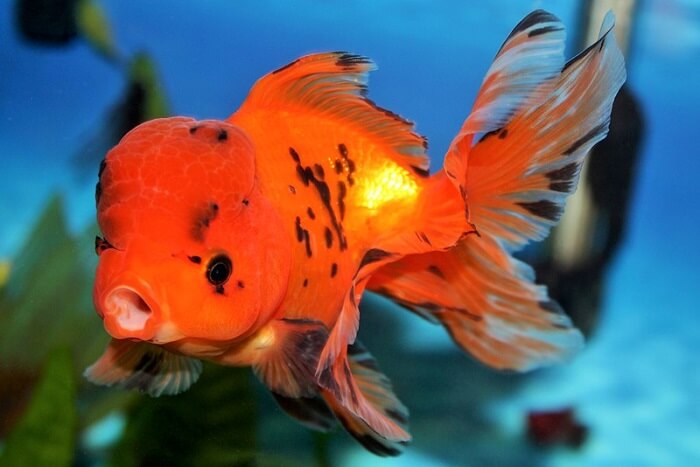
When you are wandering down the giant wall of tanks at the fish store, it’s hard to miss the Oranda Goldfish. Large, rounded bodies with a squishy brain-like protrusion on the top of their head, and long flowing fins make this Goldfish stand out. They are more of a short-bodied fish instead of the long, flat bodies of the standard Goldfish you are used to seeing.
They come in two tail types, a fringe tail or a veil tail. The fringe tail is a full two-sided tail that is connected at the top that has fringe at the edges. The veil tail is long and flowy with no fringe or tears at the edges, much like a bridal veil. The tail can be so long that it will account for 2/3rds of the body length.
The crowning focal point of these fish is their wen. The large growths on the top of their head can continuously grow, getting large enough to cause swimming problems. The wen doesn’t grow until 3-4 months of age and can take two years to be fully grown in.
What Colors Do Oranda Goldfish Come In?
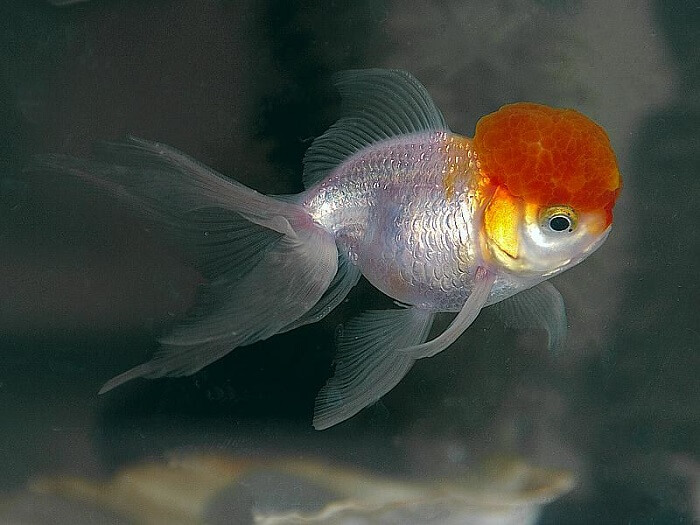
1. Gold
Gold Oranda Goldfish are the most common color seen in pet stores. The color ranges from light yellow to deep orange.
2. Black
Black Oranda Goldfish are solid black with a grey or gold belly. The wen will normally be a lighter shade than the rest of the head with gold shimmer in the right light.
3. Red Cap
The Red Cap Oranda Goldfish is shiny white with a bright red wen. They seem to be the healthiest of the varieties as their wen stays smaller. The red color stays tight on the top, the body is white and can occasionally have red or go
4. Blue
Blue Oranda Goldfish can vary from gray to dark navy blue. This can all be dependent on age, lineage, food, and water conditions. They are a rarer variety of Fancy Oranda’s, being more expensive.
5. Calico
Calico Oranda Goldfish is one of the colors that you think of when you imagine a Goldfish swimming in your tank. They are a mixture of red, black, and white with large splotches of color and little black spots.
How Easy Are Oranda Goldfish To Keep?
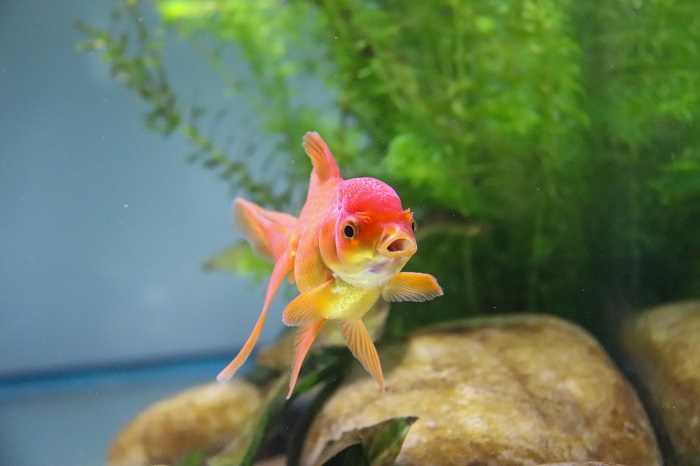
Not many people can resist the squishy-headed cuteness that is the Oranda Goldfish. And while Goldfish in general are viewed as beginner fish, they are a bit more complicated. Fancy Oranda Goldfish live 10-20 years but are known to live even longer. As long as you have the correct water parameters and set up, you’ll have your pet for many years.
What Kind Of Tank Do I Need?
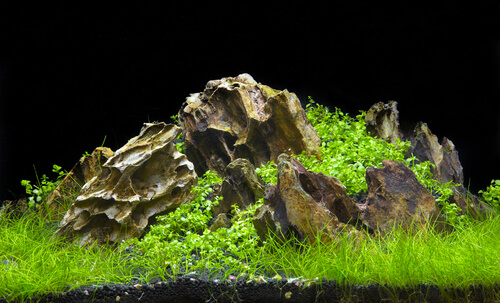
Oranda Goldfish are freshwater fish, so a typical freshwater setup with a filter will suffice for them. One singular Goldfish needs 20-30 gallons of water. Oranda Goldfish do well in smaller groups, for each fish you will need to add 10 more gallons of water. Oranda Goldfish are typically dirtier fish, so making sure that you have a higher-power filtration system is strongly suggested.
My rule of thumb is to always have 10-20 gallons of a rating higher than the capacity of my tank. A stronger filter moves more water quicker, filtering the solids from the water faster. Oranda Goldfish tend to get infections in the folds on their head, called a wen. Having clean water and substrate will help lower the chance of infection.
1. Substrate
It is suggested to use soft sand instead of rock gravel as these fish like to root around the substrate to find food. This behavior can cause damage specifically to the wen, making them susceptible to bacterial infections.
2. Tank Decor
Oranda Goldfish are incredibly clumsy swimmers. Some lines of these Goldfish have very large wens, and bulbous growth on their heads, and this enlarged wen can cause them to not swim well. Because of this, it is advised to not have much for tank decor as this can cause injuries if your fish bumps into it.
3. Plants
Plants can be a wonderful addition to your tank, but as stated above, Oranda Goldfish love to nibble on live plants and will root around in the substrate, uprooting our live plants. If you don’t mind replacing plants fairly often or dealing with a tank redecorator, live plants can be a great option.
Silk plants are a good alternative if you don’t want to be replacing plants often. Try to go with fake plants that do not offer a possibility to get tangled or trapped in as Oranda Goldfish are not great swimmers.
4. Tank Mates
The Fancy Oranda Goldfish is a placid fish that get along with tank mates that are equally as peaceful and about the same size or larger. You do not want to add smaller fish to the tank as they can be mistaken as food. Shrimp also will be quickly gobbled up by your Oranda Goldfish.
Having only a tank of Oranda Goldfish would be ideal, but it is understandable if you are wanting a mixed tank. It is not advisable to add in flat-bodied Goldfish like the Comet or Common Goldfish as they are quicker swimmers and may out-compete your Oranda for food or bully them.
Other large-bodied Fancy Goldfish like the Black Moor, Ryukin Goldfish, or Pearlscale Goldfish are excellent options and make for an interesting show tank. Other options are Bristlenose Plecos, Pepper Cory Doras, or Sailfin Plecos.
What Do Oranda Goldfish Eat?
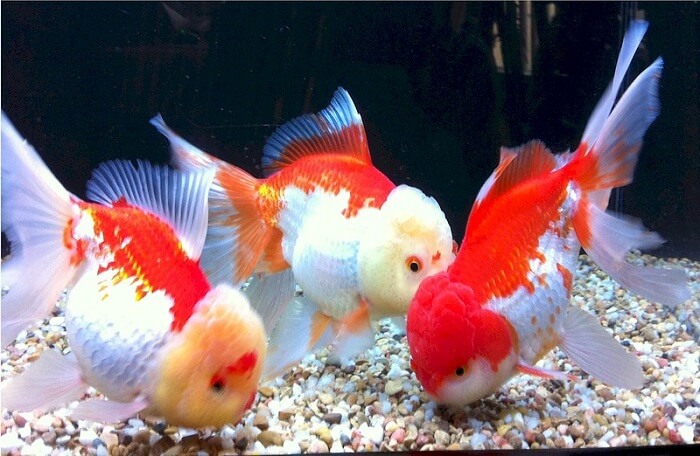
With Oranda Goldfish being omnivores, they eat a mixture of vegetation, insects, and small fish. This means that they are likely to eat your tank plants and their tank mates! Small crustaceans like shrimp and snails make easy and nutritious snacks for your Oranda Goldfish, so if you’re trying to keep those as pets, you’ll want to start a new tank.
Oranda Goldfish will accept almost any type of flake or pellet, making feeding them a breeze! Oranda Goldfish enjoy various vegetables like spinach, lettuce, and zucchini. Protein-rich foods like bloodworms, brine shrimp, and daphnia are great options to supplement your fish’s diet.
Seeing as Oranda Goldfish do not swim quickly and are not very agile, frozen foods are suggested for proteins. These guys are also great bottom feeders and will clean up any residual food from the gravel on the bottom of their tanks. Giving various foods to your fish will help keep their mind stimulated, but it has also been shown to help brighten their colors!
If your Oranda Goldfish isn’t eating or if you’re concerned about how long an Oranda Goldfish can go without eating, make sure to read our other articles.
What Can Make My Oranda Goldfish Sick?
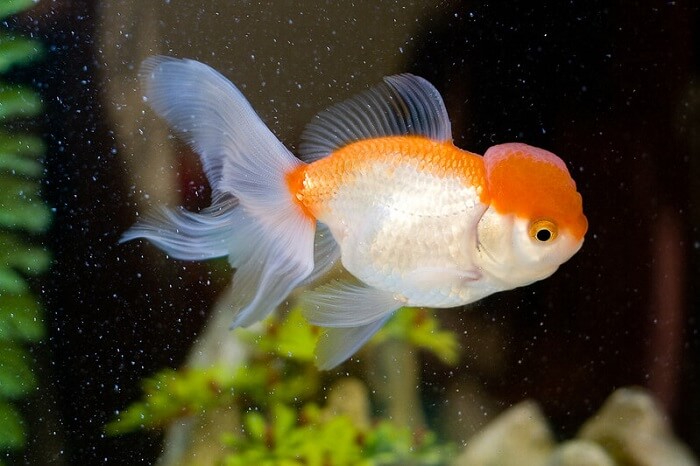
1. Ich
The first one is Ich. Ich is caused by stress and affects their gills. You will see fluffy white growths around your fish’s gills when they are sick with Ich. Oranda Goldfish can become stressed with their water is too dirty.
Ich is contagious, so making sure that you keep your waters clean and properly quarantine your new fish before introductions will keep your tank from contracting Ich. There are common medications for Ich that have a decent success rate if you catch Ich early.
The next disease that is common in Oranda Goldfish is bacterial or fungal infections, normally on their wen. It is not uncommon for your fish to hurt themselves on decor, plants, or the gravel substrate you use on the bottom of your tank.
2. Abrasions
They are very clumsy swimmers, bumping into many things, including each other. Inspect your fish often for cuts or abrasions, as these can get infected quickly. Reducing sharp tank decor, or not having decor at all, using soft plants, and keeping your tank as clean as you can help your pet not get an infection. There are many medications that you can use to help your fish with an infection that can help. But your first defense is your water quality!
3. Wen Issues
Oranda Goldfish’s signature wen gets them into trouble more often than not. Some lines of these fish’s wen never stop growing. This can cause them to become top-heavy, blind, or completely unable to swim and eat. There are medications on the market that help the wen stop growing.
4. Fins
Their long flowing fins can be very susceptible to fin rot as they can get caught on decor. Dirty water can also cause fin rot, so keeping your tank clean is your first defense. The same medications used for the bacterial and fungal infections of the wen are the same medications used for fin rot.
5. Swim Bladder
Swim bladder disease is a common illness that Oranda Goldfish can contract because of their round bodies. If you are noticing tilted or uncoordinated swimming, a swim bladder disease should be your first thought, along with a swollen body. Your first defense is, yet again, a clean tank and good temperatures. There are medications, but swim bladder disease is a difficult disease to fight.
If you are worried your Oranda Goldfish is dying, check out our article to help you identify the signs.
How Do I Breed My Oranda Goldfish?
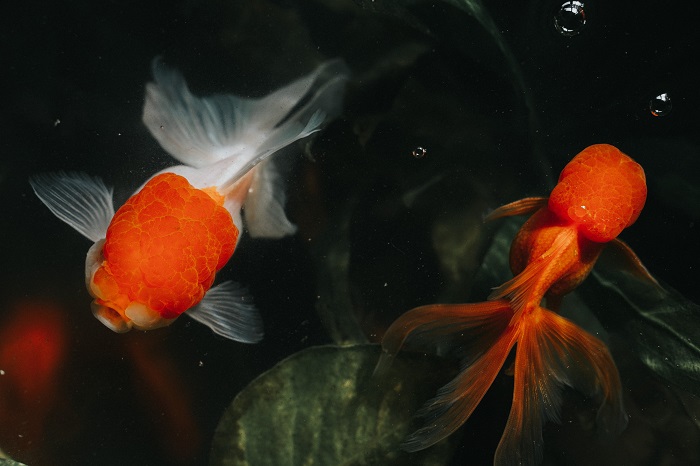
Oranda Goldfish are incredibly easy fish to breed, and they can be very willing in pairs or groups of up to five. They reach maturity at two years of age, and this is the time that the wens will stop growing and you can pick the healthiest fish that exhibit the traits that you desire the most.
Before you start breeding your fish you will want to condition them first with lots of protein-rich foods, like blood worms or brine shrimp. This helps the fish build up fat reserves that the female will use to create eggs and the male will use while courting.
You will want to do this for at least a few weeks before you decide to have your fish spawn. You will see your female’s body become rounder and your male will grow the white breeding tubercles on his head.
You will want to create a spawning tank that has similar conditions to their home tanks. This tank will become your baby Goldfish nursery. It is advised to have thin leafy plants or a spawning mop for your female fish to lay eggs into and the baby fish will hatch and grow in them. When you introduce your fish to the tank you will want to slowly raise your tank temperatures to 74° Fahrenheit and mimic the breeding season.
Fancy Oranda Goldfish can lay over close to 10,000 eggs at one spawning. Once you have witnessed spawning, when the female releases eggs and the male releases the sperm, you will want to remove the adult fish immediately as they will start eating the eggs.
In as short as two days later you could have thousands of little fry hatching in your spawning tank. You will want to do water changes daily and feed liquid foods. Once the fry gets a bit bigger, you can feed them baby brine shrimp.
Final Thoughts
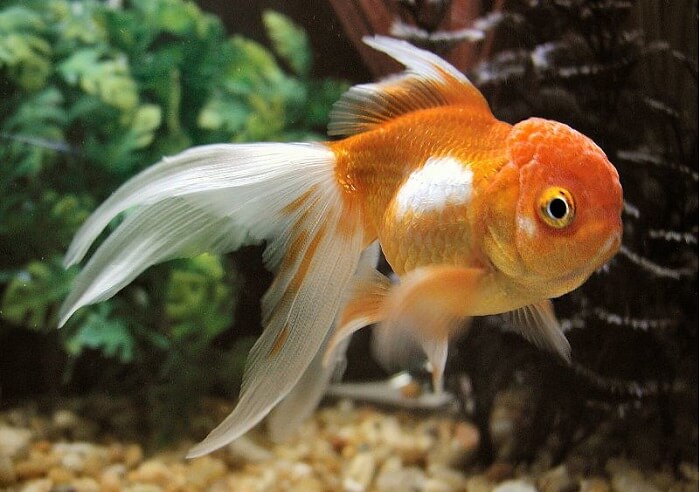
For the experienced aquaculturist, the Fancy Oranda Goldfish is a great option. These loveable, clumsy cuties can be impressive fish in an Oranda or Fancy Goldfish tank. They clean the substrate, have little goofy personalities, and will always make you smile. Just make sure to keep your water clean, and your decor at a minimum and you’ll have these bobbly-headed fish for many years to come. They are a favorite here!
We hope this guide has helped you to decide if the Oranda Goldfish is the right fish for your tank at home!


